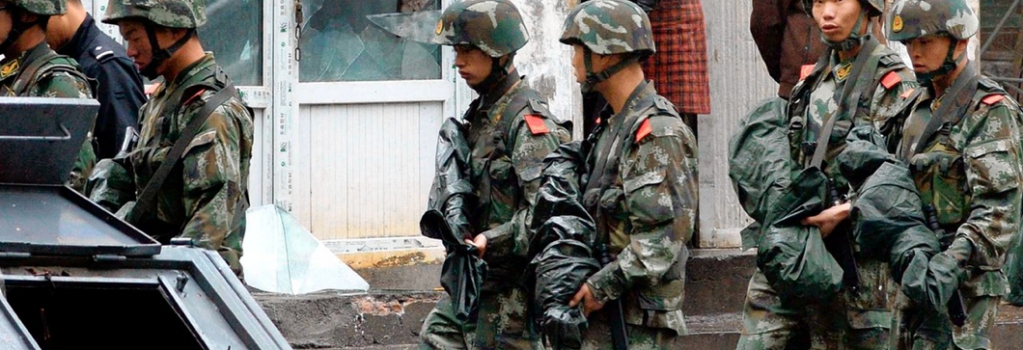Urumqi
Eighteen billion dollars in new contracts were signed during the fifth China-Eurasia Expo held in China’s western Xinjiang region last week, reported the Chinese news agency Xinhua. The contracts are part of China’s push to pursue President Xi Jinping’s One Belt One Road initiative, which aims to establish a new “silk road” between China, Eurasia, and the Middle East.
However, the Chinese are decidedly ambivalent about their on-ramp to this new silk road. Xinjiang, a region of some 21 million Chinese, is also home to an estimated 10 million Uighurs, a Turkic-speaking majority Muslim ethnic minority. On a recent research trip to China, I heard officials repeatedly express concerns that the Uighurs pose a threat to Chinese security. But it is unclear whether the Chinese truly have a problem on their hands, or whether they are trying to enlist Washington in their crackdown on an already beleaguered population.
The main issue, say Chinese officials, is terrorism. A report from New America Foundation this summer suggests that more than 100 Uighurs have gone to Syria to fight alongside the Islamic State. (The Chinese suggest that number is 300.) It’s not difficult to imagine that more could be on their way, given the news reports that the Chinese government in Beijing is supporting the regime of Bashar al-Assad, which would make the Syrian conflict a sort of proxy war for the Uighurs and Beijing.
Extremism out of Xinjiang is not new. In 2002, the U.S. Treasury Department designated the East Turkestan Islamic Movement as a terrorist group for serving as al-Qaeda’s affiliate in western China and some of the countries on its borders. The group has been accused of several attacks in recent years, including an attempted hijacking, stabbings, bombings, and more. Government officials and observers in Beijing contend that the extremist problem will eventually spill into Xinjiang.
But the Chinese government seems to be far less fearful of occasional terrorist attacks than an all-out Uighur rebellion. Many Chinese officials expressed their fear of a return of the unrest of 2009, when a large riot rocked Urumqi, the capital of Xinjiang, killing at least three Han Chinese and one police officer. Uighurs claimed that hundreds of their own were killed in the unrest, and dozens werereported missing in the subsequent crackdown.
Though the rebellion is now a somewhat distant memory, a heavy Chinese police presence now blankets this restive region. With it, Beijing appears to have regained its handle, even if some officials complain of the high costs for doing so. China is also set to invest heavily in Xinjiang in other ways. Better jobs and more resources, officials believe, should mute the appeal of jihadism. But even amid this investment, Uighurs are aware that it’s not only for their benefit. Beijing is trying to change the demographics of Xinjiang by sending Han Chinese to the region to help reach a more “harmonious” balance. This is hardly helping tensions.
But the threat is still opaque. Chinese officials won’t get specific when pressed about actual numbers of Uighur fighters in Syria, or the percentage of the population that could be described as “jihadist.” And it’s not like such information is coming any time soon. The press in China is not free, inhibiting the flow of information about the “Uighur threat.” One official stated that there were “2,000 crackdowns” in Xinjiang but declined to note during what time period these arrests took place. When pressed, officials cede that the number of extremists are “very, very few.”
In the meantime, officials say they are taking steps to limit the spread of extremist ideas on the Internet and through “illegal publications.” This seems to be a convenient justification for the “Great Firewall of China“—Beijing’s draconian internet policies—and its somewhat nebulous policy of book-banning. Indeed, one official noted that America’s first amendment is its weakness in fighting extremism, implying that the Chinese method was more effective.

Leave a Reply